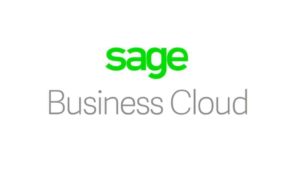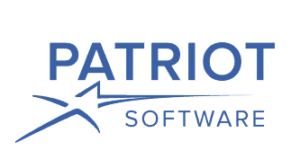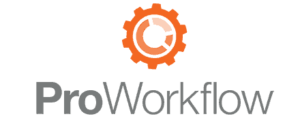- Invoicing
- Purchase Orders
- Inventory Management
- Bank Reconciliation
- Contact Management
- Reports
- Asset Management
- Add-On Features
1) Invoicing
Xero has several tools that make invoicing an easy task. First, while there is only one invoice template available for users, it is highly customizable. Users can change everything from the theme to the wording of the text easily with the software’s drag-and-drop functionality. Importantly, users can add their business logo to invoices, giving it an official touch. What’s more, the software also allows users to attach documents and photos of completed projects to the invoice.
Second, the software sends payment reminders to customers at user-specified intervals. For example, users can set the software up to automatically send a reminder email to defaulting customers when an invoice is overdue by seven days and again after 14 days and so on.
Third, because of its seamless integration with payment gateways such as PayPal and Stripe along with debit and credit card portals, users can embed a ‘Pay Now’ button onto their invoices. This button gives customers plenty of options to pay instantly.
Lastly, users can save time and effort with Xero’s robust automation features. Apart from email reminders, these include setting up repeat invoices for regular customers, replicating previous invoices, and sending out bulk invoices.
2) Purchase Orders
This accounting software gives users the tools to efficiently and quickly manage their purchase orders. The software simplifies the process of creating one with its purchase-order templates. Like the invoice template, users can customize their purchase orders to showcase their brand’s color and font. Likewise, they can add their brand logo and choose what information they show along with any specific contact or delivery instructions to the document.
Another way Xero keeps things simple in this department is by allowing users to convert their purchase orders into an invoice with one click. This feature is a considerable time-saving measure for businesses looking to sell products to customers as it negates the need to create a separate invoice.
Additionally, it provides users with a comprehensive audit trail of their purchase order from start to finish. This trail includes the total cost, delivery time, and delivery location. It even allows users to keep track of and mark partial order fulfillments in case their supplier ships their order in parts.
3) Inventory Management
With purchases comes the need for inventory management. Though not as robust as its other features, Xero provides basic and competent inventory management features that will satisfy the needs of most small businesses. For enterprise-level users, the software integrates with several inventory-focused apps such as TradeGecko and Dear Inventory to get the job done.
The inventory tracking features allow users to keep track of details such as the tax status of each item along with product descriptions, images, and costs. Along with this, it tracks stock levels and values daily. The only negative is that the software does not have a ‘low stock’ or ‘out of stock’ alert like QuickBooks does. What it does effectively is to give users an overview of what their popular products are complete with the profits they make on each item.
4) Bank Reconciliation
Bank reconciliation is a must-have feature for every accounting software. Without it, there is no way to ensure that a company’s financial records match that of their bank account. Xero offers fast bank reconciliation features that turn this vital task from a monthly, multi-step chore to a smooth, one-step, daily affair. The software automatically imports bank transactions daily. Importantly, the software encrypts all transactions during transport, making it a secure data transfer.
Once imported, the AI-driven software matches the bank transactions with those recorded by the user in the app. Users can then reconcile each transaction separately or group identical transactions together and match them all with one click. Not only does this save them hours of administrative wrangling, but it also gives them a daily update on the health of their business.
5) Contact Management
This app’s customer management tools ensure that all contact information is stored in one easily accessible data repository. This repository not only makes it easy for users to find information but also gives them a 360-degree view of a customer’s interaction with them. The data collected includes a customer’s email interactions, purchase transactions, and buying history. This overview helps businesses understand and serve their customers better.
The software’s Smart Lists feature enables users to organize all collected data into separate lists based on user-specified rules such as age, location, or invoice amounts. Used this way, Smart Lists doubles up as an efficient marketing tool too. Business owners can use these lists to create targeted marketing campaigns and boost their chances of making a recurring sale. Once generated, users can export the data to any third-party email marketing app of their choice with one click and go from there.
6) Reports
Boasting of robust reporting features, Xero provides users with the tools to monitor the state of their business efficiently. The software has over 50 different reports to choose from. These include sales reports, purchase reports, tax reports, project reports, and even fixed asset reports. If that isn’t enough, the reports are customizable, allowing users to apply different filters and date ranges to generate custom reports as well. Besides, users can change the title, arrange rows and columns as required, and add pie charts or bar graphs to each statement. A report, once generated, can be archived, printed, or exported as Excel, PDF, or Google Sheet files.
7) Asset Management
With Xero, users can track their fixed assets and manage depreciation in one go. Once you upload assets such as vehicles, office equipment, or machinery into the software, you can access it through the software’s asset register. This register gives users an overview of items registered and those sold or disposed of. You can also add additional information such as the asset’s serial number and warranty expiry date here. The software has several settings that users can choose from to run depreciation evaluations on the registered items, such as time-based or tax-based depreciation values. Since the app automatically generates accounting journals for each item, selling off a fixed asset is also easy.
8) Add-On Features
Expense Management
Xero’s expense tools are an excellent addition for businesses that have multiple employees and need an automated and hassle-free expense tracking solution. The software takes the arduous, error-prone task of collecting employee receipts, approving them, and allocating payments accordingly off a manager’s hands.
The software streamlines all the expense-tracking related tasks from data entry to submitting and reconciling expenses. Employees can easily submit claims using their mobile or desktop apps. Besides that, they can also add explanatory notes, images, and receipts to back up their expense claims.
Notably, the app gives admins complete control over who can submit, view, and approve expenses. Along with that, admins can also split transactions and categorize expenses. Once you create a new expense category, the software automatically assigns new transactions accordingly. What this integrated accounting does is give users a bird’ s-eye view of their businesses’ cash flow, allowing them to identify hidden costs and plan budgets accordingly.
Project Management
This accounting software has two project management apps based on business size. The first, Xero Projects, targets solo entrepreneurs and small businesses. The second, WorkflowMax, is earmarked for medium to large corporations that have more complex project management needs.
Xero Projects is more focused on the financial aspect of project management. It gives users essential project management tools such as time tracking, budget monitoring, profit monitoring, cost estimation, and quote generation. With it, users can see which projects are turning in a profit and which are losing money.
WorkflowMax has end-to-end project management tools that can help users at every stage of a project, from planning to product delivery. Its features include client management, lead management, task management, and workflow management. This project management software has a 14-day free trial and will cost users an additional $15 – $250 per month, depending on the number of users.




